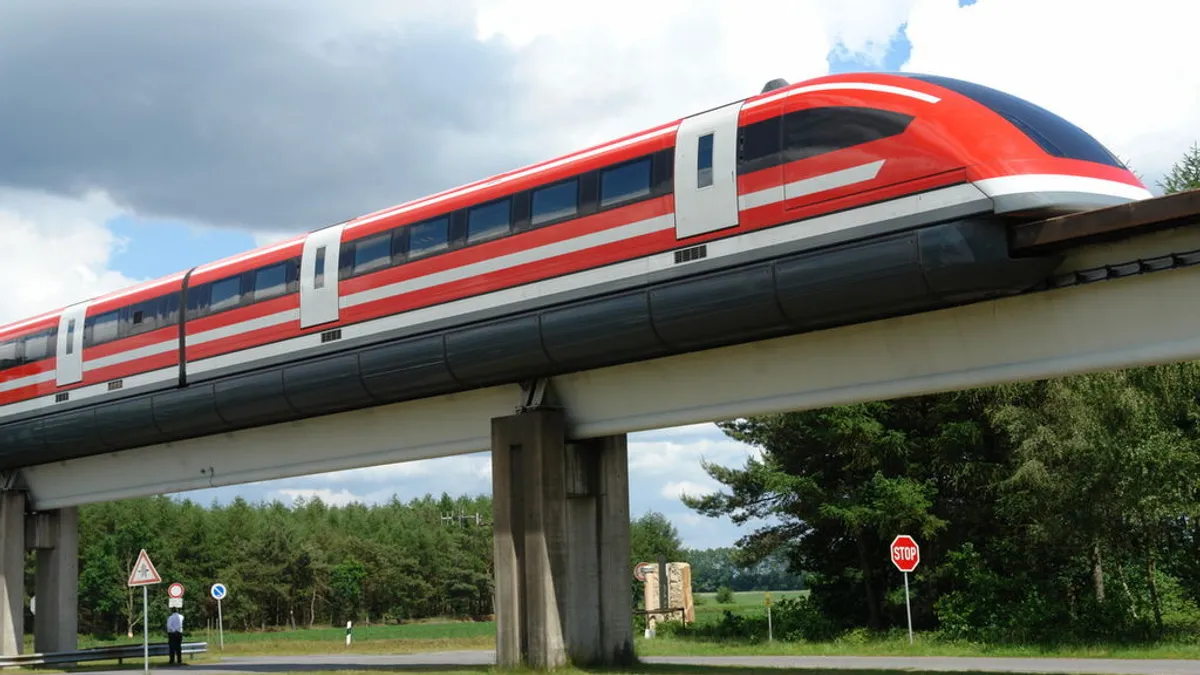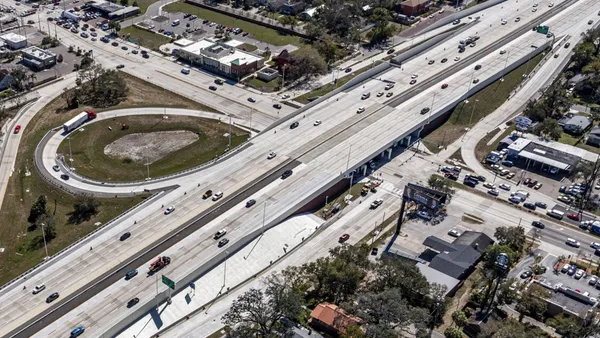Dive Brief:
- Maryland officials told a House committee on Thursday that construction on a magnetic levitation, or maglev train, which would travel between Baltimore and New York City at speeds of more than 300 mph, could begin in 2020, according to WBALTV.
- The planned route would cut travel time between downtown Baltimore and Baltimore-Washington International Thurgood Marshall Airport to eight minutes, a trip from Baltimore to DC to 15 minutes and travel time between DC and New York City to an hour. The state will not contribute any financing for the project, which instead will be funded by $5 billion from Japan and federal railroad grants. Japan is also allowing the project to use its high-speed train technology.
- Construction of the rail, which will be 75% underground, is expected to generate 74,000 construction jobs and 1,500 permanent positions.
Dive Insight:
When Japan contributed $2 million toward feasibility studies for the rail project in August of 2016, the estimated cost for the Baltimore-Washington, DC, portion of the system was $10 billion. The Japanese contribution added to the $28 million that the federal government kicked in for environmental and engineering studies.
The Maryland maglev train could be in for some competition from Tesla founder Elon Musk, however. Back in October, the Maryland Department of Transportation gave Musk's The Boring Company preliminary permission to dig a hyperloop tunnel from Baltimore to DC. But there are still many unknowns about the proposed project like the exact route, costs, environmental impact, schedule and funding source.
Maglev technology is also being used in the design of elevators for supertall buildings and those with unique shapes. Last year, ThyssenKrupp unveiled the world's first maglev elevator system, which moves not only vertically but also horizontally, according to the MIT Technology Review. The company has been testing the system in a more than 800-foot tower in Germany, and developer OVG Real Estate is expected to install maglev elevators in its East Side Tower project, which is scheduled for completion in 2020.
Because construction of the proposed Maryland maglev train will be privately funded, the project will sidestep an obstacle that has prevented foreign transportation technology and equipment from being used in the U.S. — the country's Buy America laws. Those regulations bar companies from importing foreign materials to be used in transportation projects receiving federal funds.













